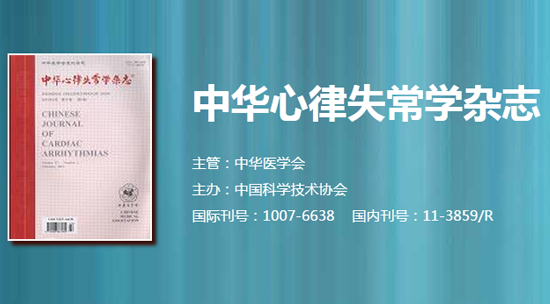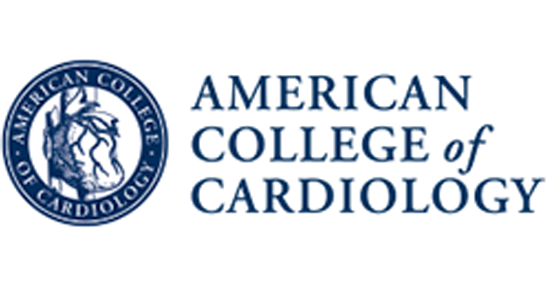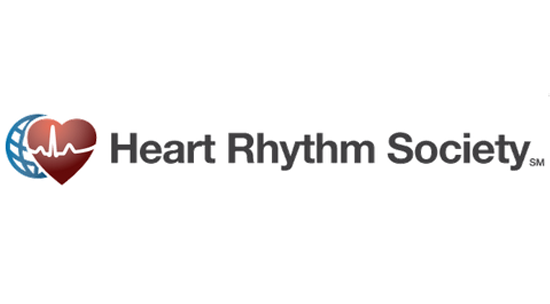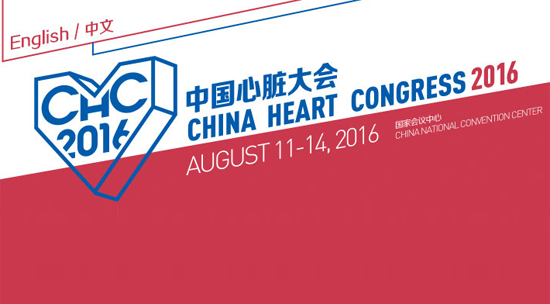HeartRhythm主编—陈鹏生教授语音速递(九月刊 英文版)
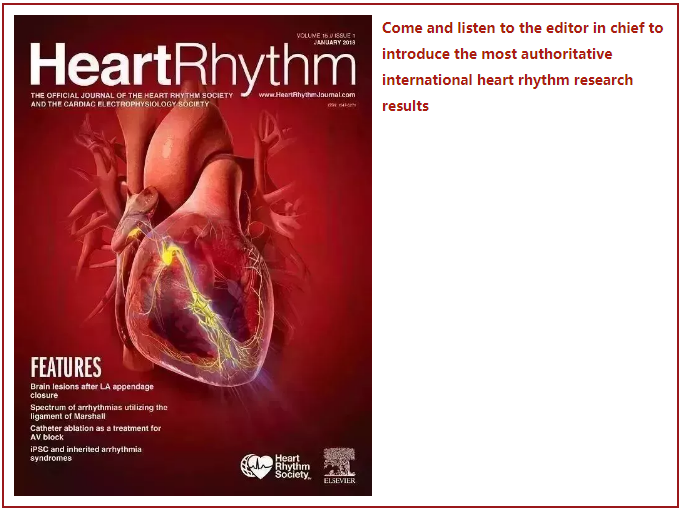

Peng-Sheng Chen
Hello, this is Dr. Peng-Sheng Chen, the Editor-in-Chief of Heart Rhythm. I am summarizing the September issue of the journal. The September issue is a focus issue on atrial fibrillation.
The first article is titled “Prevalence and Outcome of Early Recurrence of Atrial Tachyarrhythmia in the Cryoballoon vs. Irrigated Radiofrequency Catheter Ablation (CIRCA-DOSE) Study”. The purpose of this study was to determine the incidence and outcomes of patients experiencing early recurrence of atrial tachyarrhythmia (ERAT) after PVI using advanced-generation ablation technologies. The authors found that ERAT occurred in 61% of the 346 patients after ablation and is a significant predictor of late recurrence and symptomatic atrial tachyarrhythmia. The authors conclude that ERAT remains common after PVI despite use of advanced-generation ablation technologies. Early AF recurrence beyond 3 weeks after ablation is associated with increased risk of late recurrence.
The next paper is “Effect of Preprocedural Pharmacologic Cardioversion on Pulmonary Vein Isolation in Patients with Persistent Atrial Fibrillation”. The purpose of this study was to determine whether pharmacologic cardioversion with a fixed low-dose antiarrhythmic drug before ablation could stratify the long-term outcome of a PVI-alone strategy. Among the 303 Persistent AF patients who received the antiarrhythmic drugs, 102 returned to sinus rhythm and the other 201 had persistence of AF. The patients who returned to sinus rhythm had a significantly lower 36-month AF/AT recurrence rate than those who did not respond to antiarrhythmic drugs. The authors conclude that preprocedural pharmacologic cardioversion could be a useful determinant for patients with treatable persistent AF by PVI alone.
Coming up is “Validation of an Algorithm for Continuous Monitoring of Atrial Fibrillation Using a Consumer Smartwatch”. The authors studied a commercially available smartwatch with photoplethysmography and electrocardiogram capabilities. They developed a new algorithm to analyze these data. A total of 204 participants completed the free-living study, recording 81,944 hours with both measurements. The authors demonstrate that a novel photoplethysmography algorithm analyses of smartwatch data can continuously detect AF with excellent performance and that confirmation with ECG further enhances specificity. In addition, their watch photoplethysmography algorithm can estimate AF burden.
Next up is “Interatrial Septal Tachycardias Following Atrial Fibrillation Ablation or Cardiac Surgery: Electrophysiologic Features and Ablation Outcomes”. The purpose of this study was to investigate the electrophysiological features and outcomes associated with catheter ablation of interatrial septal tachycardias. They studied 338 patients undergoing catheter ablation of ATs following AF ablation or cardiac surgery. Among them, 29 patients (9%) had interatrial septal tachycardias. Ablation was acutely successful in 27 patients (93%). After median follow-up of 6-52 months, 17 patients (59%) remained free from recurrent arrhythmias. The authors conclude that interatrial septal tachycardias are rare. Catheter ablation can be challenging and may require sequential unipolar ablation or bipolar ablation.
The following article is titled “P-wave Signal Averaged ECG: Reference Values, Clinical Correlates, and Heritability in the Framingham Heart Study”. The authors performed P-wave signal-averaged electrocardiography (P-SAECG) in 2 generations of Framingham Heart Study participants. The study included 4307 participants. After adjusting for age and sex, total P wave duration was positively associated with height, weight, prevalent heart failure, history of atrial fibrillation, and atrioventricular node blockers, and negatively associated with smoking, waist circumference, heart rate, and diabetes. The estimated heritability of P-SAECG traits was moderate. The authors conclude that P-SAECG traits are associated with multiple AF-related risk factors and are moderately heritable.
Up next is “Pericardial Effusion Requiring Intervention in Patients Undergoing Percutaneous Left Atrial Appendage Occlusion: Prevalence, Predictors and Associated In-hospital Adverse Events from 17,700 Procedures in the United States”. Data were derived from the National Inpatient Sample database from January 2015 to December 2017.Pericardial effusion requiring intervention occurred in 220 total patients (1.24%) and was associated with in-hospital mortality, other Watchman-related major complications, length of stay > 1 day, and increased hospitalization cost.
The next article is “Arrhythmia prevalence among Patients with Polymyositis-Dermatomyositis in the United States: an Observational Study”. Polymyositis and dermatomyositis (PD) are rare rheumatologic conditions characterized by symmetrical proximal muscle weakness and, in the case of dermatomyositis, cutaneous eruption. The authors studied the National Inpatient Sample database in the United States between 2016 and 2018, and found that patients with PD aged <70 years had a higher prevalence of arrhythmia and higher adjusted odds of arrhythmia compared with controls. This increased risk was only seen for supraventricular arrhythmias. The authors conclude that Arrhythmias were associated with significant mortality among patients with PD.
The above original articles are followed by a contemporary review titled “Smartwatch-based Detection of Cardiac Arrhythmias Beyond the Differentiation Between Sinus Rhythm and Atrial Fibrillation” and a creative concept paper titled “Strategies to Balance Stroke and Bleeding Risk in Patients with Atrial Fibrillation and Cancer”.
In addition to the papers on atrial fibrillation, this issue of the journal also has the following manuscripts unrelated to AF. The first one is titled “The Precordial R' Wave: A Novel Discriminator between Cardiac Sarcoidosis and Arrhythmogenic Right Ventricular Cardiomyopathy in Patients Presenting with Ventricular Tachycardia”. Cardiac sarcoidosis with RV involvement can mimic ARVC. The purpose of this study was to evaluate the distinct terminal activation patterns in precordial leads V1 through V3 as a discriminator between cardiac sarcoidosis and ARVC. An R' wave in leads V1 through V3 was present in all patients with cardiac sarcoidosis compared to 11 (48%) patients with ARVC. An algorithm including a PR interval of ≥220 ms, the presence of an R' wave, and the surface area of the maximum R' wave in leads V1 through V3 of ≥1.65 mm2 had 85% sensitivity and 96% specificity for diagnosing cardiac sarcoidosis. The authors conclude that the QRS terminal activation in precordial leads V1 through V3 may reflect disease-specific scar patterns.
Next up is “Double Loop Ventricular Tachycardia Activation Patterns with Single Loop Mechanisms: Asymmetric Entrainment Responses during "Pseudo-figure-of-eight" Reentry”. The purpose of this study was to interrogate VT circuits with Figure-8 activation patterns by entrainment mapping to differentiate an active loop from a passive loop. They studied 60 VT circuits in 55 patients. Of 40 circuits with Figure-8 patterns by activation mapping, 20 were studied with entrainment mapping, where a passive loop was identified by a long postpacing interval in 50%. The authors conclude that in a selected cohort, single loop mechanisms are more prevalent than double loop reentry in reentrant human VT. Half of VT circuits with double loop activation patterns can be demonstrated to be sustained by a single active loop mechanism by entrainment mapping. Ablation targeting the shorter active loop resulted in rapid termination during radiofrequency application.
The following article is “Venous Anatomy of the Left Ventricular Summit: Therapeutic Implications for Ethanol Infusion”. The purpose of this study was to delineate the LV summit venous anatomy by selective venography and 3-dimensional (3D) mapping during venous ethanol ablation and by venous-phase coronary CT angiography. Angiography identified 3 LV summit veins. Collateral connections were common. In 39 patients the LV septal veins reached the outflow tracts and their vicinity. The authors conclude that they provided a systematic atlas and nomenclature of LV summit veins related to arrhythmogenic substrates. Venous-phase coronary CT angiography can be useful for noninvasive evaluation of LV summit veins before ethanol ablation.
The next article is “Long-term Survival Following Transvenous Lead Extraction. Importance of Indication and Comorbidities”. The authors studied a total of 1151 patients with a mean follow-up of 66 months, and mortality was 34.2% (n = 392). A higher proportion in the infection group died than non-infectious group. In the total cohort, multivariable analysis demonstrated increased mortality risk with age >75 years, estimated glomerular filtration rate <60 mL/min/1.73 m2 and higher cumulative comorbidity and reduced risk per percentage increase in left ventricular ejection fraction. The authors conclude that long-term mortality for patients undergoing transvenous lead extraction remains high. This study suggests also assessing longer-term outcomes when considering transvenous lead extraction in those with a high risk of medium- and long-term mortality, particularly for noninfective indications.
The follow article is “Gain in Real-World Cardiac Resynchronization Therapy Efficacy with SyncAV Dynamic Optimization: Heart Failure Hospitalizations and Costs”. SyncAV, a device-based CRT algorithm, promotes electrical optimization by dynamically adjusting AV intervals. Patients with SyncAV-capable CRT devices followed by remote monitoring and enrolled in Medicare fee-for-service for at least 1 year preimplant and up to 2 years postimplant were studied. A total of 3630 patients were studied, including 726 (25%) patients with SyncAV ON. Patients with SyncAV OFF were 4:1 matched to those with SyncAV ON. After 2 years, the heart failure hospitalizations rate was lower in the SyncAV ON group than in the SyncAV OFF group. The authors conclude that SyncAV CRT is associated with significantly reduced heart failure hospitalizations and associated costs, incremental to standard CRT.
Next up is “Cardiac Afferent Signaling Partially Underlies Premature Ventricular Contraction-induced Cardiomyopathy”. Transient receptor potential vanilloid-1 (TRPV1) afferent fibers are implicated in the reflex processing of cardiac stress. A PVC-induced cardiomyopathy swine model with 50% PVC burden was created via an implanted pacemaker. The authors prospectively randomized the pigs into 3 groups, including PVC only (n = 11), PVC TRPV1 depletion or control (n = 6). They found that TRPV1 afferent depletion alleviates left ventricular dysfunction in early- but not late-stage of PVC-induced cardiomyopathy. This temporal effect suggests that multiple pathways promote PVC-induced cardiomyopathy, of which TRPV1 afferents are a part.
The following paper is “Renal Denervation Prevents Myocardial Structural Remodeling and Arrhythmogenicity in a Chronic Kidney Disease Rabbit Model”. Eighteen New Zealand white rabbits were randomized to control, CKD, and CKD-renal denervation groups. The CKD group had a significantly higher ventricular arrhythmia inducibility than the control and CKD-renal denervation groups. In the CKD-renal denervation group, ventricular fibrosis was significantly decreased compared to the CKD group. Sympathetic innervation in the CKD group was significantly increased compared to the control and CKD-renal denervation groups. The authors conclude that neuromodulation by renal denervation demonstrated protective effects with less structural and electrical remodeling, leading to attenuated ventricular arrhythmias. In a rabbit model of CKD, renal denervation plays a therapeutic role by lowering the risk of ventricular arrhythmias caused by autonomic dysfunction.
The last original article is titled “In vitro Modeling Accurately Predicts Cardiac Lead Fracture at 10 Years”. The purpose of this study was to demonstrate a predictive model for lead fracture and validate the results generated by the model by comparing them to observed 10-year ICD lead fracture-free survival. The model presented here uses a combination of in vivo patient data, in vitro conductor fatigue test data, and statistical simulation to predict the fracture-free survival of cardiac leads. The model was validated with human clinical lead performance data. Results show that modeled and observed fracture-free survival for Quattro was superior to that for Fidelis leads. The modeled survival agreed with the observed fracture-free survival data with an average error of 0.3%. The authors conclude that this model for cardiac lead fracture-free survival using in vivo lead bending measurements and in vitro bench testing can be used to predict lead performance as observed by alignment with field survival data.
The above original articles are followed by a Point-of-View written by Dr Win-Kuang Shen titled “Premature Ventricular Contraction Ablation for The Treatment of Heart Failure”. This article is the 9th entry in our series of articles to celebrate the 30th year of RF ablation.
I hope you enjoyed this podcast. For Heart Rhythm, I’m the Editor-In-Chief, Dr. Peng-Sheng Chen.
